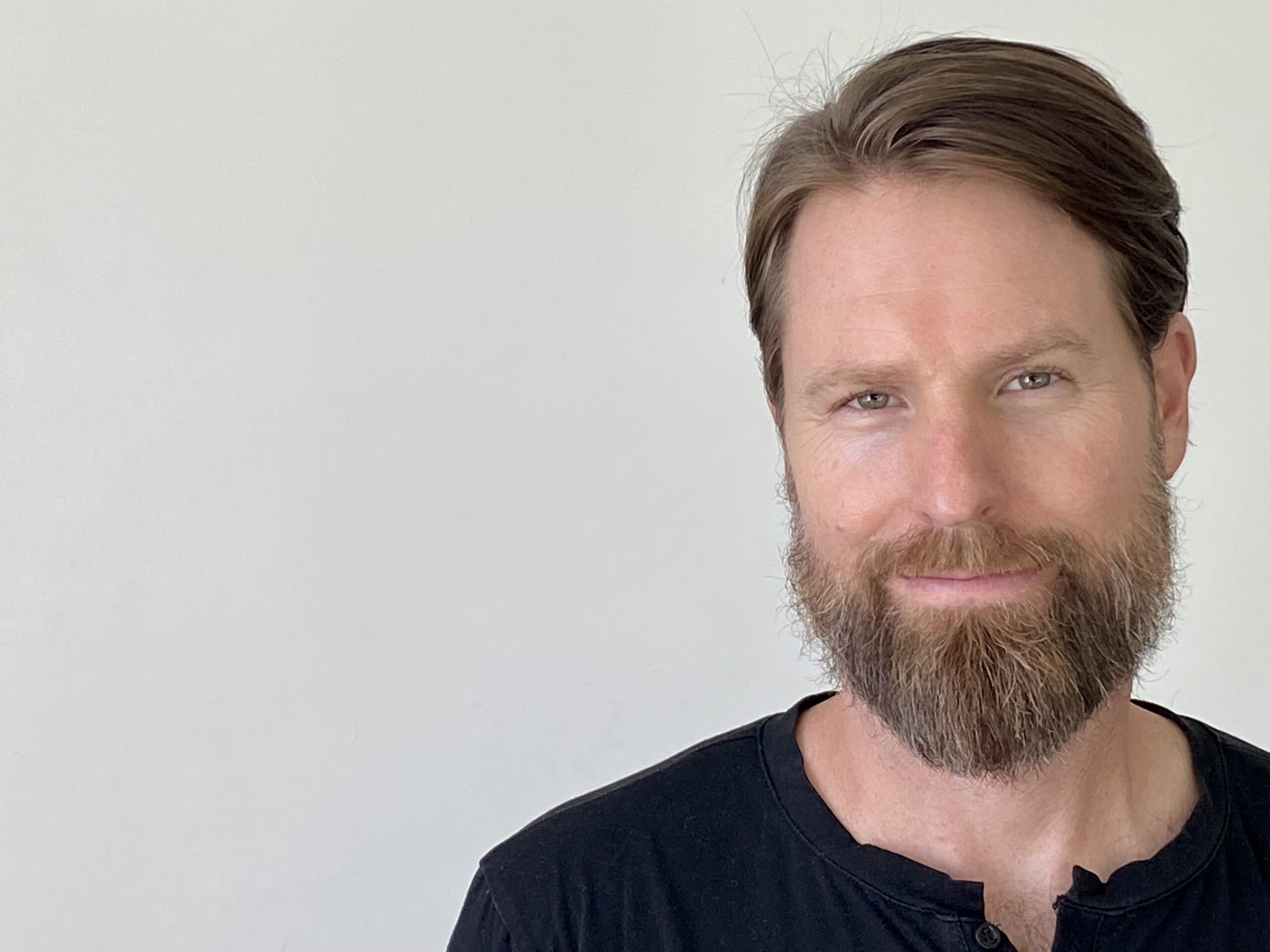Bringing Ideas to Life
What can the design and construction of a building teach us about life? Amanda Gunawan shares her thought process as an architect from bringing ideas to life!
Listen to us On
About the Episode
LifeBlood: We talked about bringing ideas to life, the architectural process, taking all available information into consideration when starting a project, and the necessity of good communication with Amanda Gunawan, Founding Principal of OWIU Design, a full-service architecture and design firm.
Listen to learn why physical exercise will strengthen more than just your body!
For the Difference Making Tip, scan ahead to 18:11!
You can learn more about Amanda at OWIU-Design.com, Facebook, Instagram and LinkedIn.
Thanks, as always for listening! If you got some value and enjoyed the show, please leave us a review wherever you listen and subscribe as well.
You can learn more about us at MoneyAlignmentAcademy.com, Twitter, LinkedIn, Instagram, Pinterest, YouTube and Facebook or you’d like to be a guest on the show, contact George at Contact@GeorgeGrombacher.com.

George Grombacher
Lifeblood Host

Amanda Gunawan
Guest
Episode Transcript
Come on.
When will I plug this is George G and the time is right welcome today’s guest strong and powerful medic Gunawan. Amanda, are you ready to do this? Yes, I am. Thank you so much for having me. excited to have sex as I said early. Amanda is the founding principal at Oh, W ru design. They’re a full service architecture and design firm manda tell us a little bit about your personal life’s more about your work and why you do what you do.
Amanda Gunawan 0:42
Um, okay, so I was born in Indonesia, I was raised in Singapore. Well, I grew up in Singapore. And then I moved to Los Angeles from for college, and I’ve been here ever since. That was, I think, seven years ago, or eight years ago, I can’t believe how fast time has passed. Really.
Unknown Speaker 1:07
It’s hard to think that it’s almost a decade since I actually started architecture school. Yeah, so I always, I think I’ve always wanted to be in architecture. So there’s not a lot for me to like, I did start wanting to be anything else. So whenever I talk about my childhood, and how it led to my path in architecture, it seems like there isn’t very much of a story. Really, like I did want to always be in architecture in real estate. So here I am.
george grombacher 1:45
Awesome. No, no, no twists and turns and and crazy experiences. It was you always knew. That’s awesome.
Unknown Speaker 1:54
Yeah, I mean, crazy experiences. Sure. But there wasn’t like a an epiphany. I was one of those annoying kids, I think I was the kid that just knew what they wanted to do, and just decided that, that’s, that’s where I’m headed. And here I am. And I’ve like been relentless ever since.
george grombacher 2:16
I love it. So when, when, when, when you were little, was it a function of yours wanted to build things was you’re always sketching things, it’s a combination of all of it.
Unknown Speaker 2:29
I think, um, ever since I was little, I’ve always had this affinity for creating things. So I would always be like, I was quite introverted as a child. And I would always be in a corner. And I would just like, I would have like a little desk area. And I’d always be sketching and always just try to make things. And there was a part of me that just like I that was, like my happy place. And it gave me like internal validation. Little did I know, as a child, that that was the act that was giving me internal validation, the act of creating something and transforming it into a product that I could be proud of, like, I was always making storybooks, comic books like little like buildings, and arts and crafts for other people. And so that was one aspect of it. And then the other aspect of it was actually realizing how I process information. And so how I would analyze the world, and what was the most comfortable mode of expression for me. And that was visual that was always visual for me. And I found that out much later, were like, halfway, like, maybe when I was like, 15, or something, I realized that like, I really like fixing problems, too. And so I just I problem solving was like one of these things that I just really enjoyed. And then I found out that the best, like my best mode of expression was always visual. And so I wanted to somehow combine all of these things into one occupation, and then decided that was architecture because that had all of these, like, these, like skills that I really enjoyed.
george grombacher 4:24
I love it. Okay. So fast forward to today. Do people come to you to fix existing problems? Or because they want in an existing space to be changed? Is it we have a blank slate and we want you to create something? Is that everything?
Unknown Speaker 4:46
Yeah, it’s it’s a little bit of both, but I would argue that that’s like, even when it starts with a blank slate, that’s still kind of a design problem. Because I don’t think that you ever design. And this is my perspective, I don’t think that I’ve ever designed from a completely blank canvas, at least even if it was a blank canvas, I’m always trying to create my own parameters for it. So I would always take in from the surroundings. And it’s funny because my ex boss who Tom main for Morphosis who I actually, like really admire, I remember him telling me this once where he had finished designing a swimming pool in his house. And so he said that one day, he was just sitting at the side of a swimming pool, and watching kind of like the ripples and the caustic effects of the water. And he was just sitting there, and he had this epiphany. And he said, something like, I can’t believe that people think that they can exist and design and feel like they’re not connected and a part of the world, like they can’t just connected from their heads internally, they have to understand that they are a part of something else. And so with that said, I think he put it quite simply were designing, you’re always a part of something else. So you’re never really designing just internally from inside your head on a blank canvas. Like it’s always connected to everything in your surroundings. And so it’s about creating parameters for yourself to attack this design problem, or for lack of a better word.
george grombacher 6:38
Yeah, like that, that like that. That makes a lot of sense. Interesting. And there’s certainly, there’s probably, perhaps there are opportunities where you can just build something in the middle of nowhere, exactly how you want. But to your point, there’s existing structures, and there’s probably zoning considerations and different rules. And so there are existing parameters. And so your challenge slash opportunity is, how do I take my vision and the way that I see the world and design and bring those two together?
Unknown Speaker 7:07
Exactly.
george grombacher 7:09
Nice. Has has, has your have your parameters changed and evolved?
Unknown Speaker 7:18
Yes, definitely. And it changes, I think it always changes according to, like, the site itself. I think in architecture, the way that we design at our firm is that part of it is taking the existing and respecting what’s there. But also putting in what we what we can actually offer right now. So what we have to offer as a designer, but also at the same time taking into consideration the the future of it. So basically thinking about, okay, how is this space going to be used eventually? And how do we want it to grow with the person that’s going to inhabit the space, and so we never really leave a space done, we always leave it in a state where it will evolve with the person that’s inhabiting this space.
george grombacher 8:21
That’s really makes sense. You want to be mindful of the human beings and how they’re going to be interacting with it.
Unknown Speaker 8:27
Exactly. And you want this space, like we always say, we don’t want this to build something to last, we want it to be built to evolve.
george grombacher 8:36
Oh, nice. Like, that’s a cool way to think about it. So does your work is it? Is it? Is it homes? Is it? Is it office buildings? Is it is it everything?
Unknown Speaker 8:50
It’s a little bit of everything. It’s we’re definitely I mean, we’re only three years old. So we’re not the scale where we’re building office, like 50 storey office buildings yet, maybe we’ll get there eventually. But we’ve kind of, in order for us to truly practice what we preach, which is thoughtful design and careful craftsmanship. We’ve started to evolve into a full service design all the way till build firm. So we take on the construction as well, because we like to see through a project from micro and all the way to macro. And yeah, it’s basically just a way for us to micromanage.
george grombacher 9:33
Appreciate that. So when when when you have a new opportunity, the the client is an individual or whoever it is, you are you are merging your parameters and the way that you’re viewing the opportunity with how it’s going to interact with the world. Is it also taking feedback from from the for lack of a better term, the the owner
Unknown Speaker 9:59
Yes, of course. Very much. So I think that, again, it is like when we’re hired by an owner, it’s kind of like, we’re listening to what they want. Sometimes not even with them having to say anything. But I think that’s our job. I think we are here to solve problems, to create something for them and kind of process all of that information, whether it’s existing, on top of that, whatever they’re telling us, and whatever we think that they need, and kind of, like translate that into visuals. In this case, like a building.
george grombacher 10:44
It’s interesting, fascinating. So you start with his start kind of ideating? And then it’s a function of how am I actually what what are the materials? How, how do you bring all that together?
Unknown Speaker 10:58
Um, I think it’s basically, yeah, it’s a bunch of factors, it goes into process. Materials would usually come. So no, actually, sometimes it comes from the, from the beginning part. It’s all like a process. And it’s basically just the way that you view it is like a building. It’s like a giant system. It’s kind of like a computer, it has all these moving parts. So you don’t really like there is a building block process. And there are the beginning stages of like, the conception of this idea, but it’s not exactly like it’s not linear like that. But you are building a machine. So there are like, all these aspects to it were like what you said, like a material palette? Or like, basically, like, how do you circulate in the space, etc, etc. and all these things will layer and build on one on top of the other to kind of create the entire space?
george grombacher 12:07
I like it. Is there I imagine that there are a challenges at every step of the process is are there other certain parts that you think are more challenging than than others? Maybe that’s the wrong word?
Unknown Speaker 12:27
challenging, I think all of it is a little bit challenging, I think. Just like anything, it’s kind of like trying to complete a task, and so unforeseen, unforeseen circumstances will always occur. And I think that in itself is quite challenging. Because you, I mean, it’s you never expected and you never know what it is. And so, yeah, it happens in every stage, it all usually actually happens all the time. So that’s something that us as architects, like, we just have to be very used to just thinking on our feet, and being able to improvise and figure out another solution. It’s constantly problem solving,
george grombacher 13:18
particularly as you are actually managing the construction and every aspect of it, I imagine that it’s that is constant.
Unknown Speaker 13:27
Yeah, it’s also like communication, a lot of it like, basically like running any company, I think communication is a big part of it to the different I mean, communication is only ever successful when you are when the person hearing it is actually receiving it in the way that they should. So there’s like two facets to it. It is what you think it is and what it is in your head. And the idea itself and how you want it to be translated, but also how this person is receiving it. And so it’s funny because we started inflection bills, which is our construction company, during COVID. And we’ve kind of grown the team to a point where we have, like, we have these men working for us, like there are in house team, construction workers. And so on one hand, I have the design team, who I have to communicate with. And they’re all architecture graduates. And it’s very, it’s a very different way of communicating with them. And then coming up with these ideas and then having to communicate with the construction team, where they’re not there. They’re more street smart, right? Like they’re not exactly like college educated. Sure. And so, but like they really understand how something is built. So it’s basically like trying to get this abstract idea into like a design. And then from there talking about how to get it built. And like there’s this difference in communication as well. But it’s necessary to kind of bridge that.
george grombacher 15:13
Yeah, I think that’s like that. That’s fascinating. So the importance of communicating, this is what our vision is and what the design actually is. But how do we actually build the thing? And when we’re running into problems, how do we, how do we approach them. And I also imagine that there needs to be ongoing communication and open flow of communication with the owner to make sure that everything’s progressing along and managing those expectations, because it’s probably never going to go quite as smooth as we want.
Unknown Speaker 15:42
Exactly, I think it just safe to say that if you were a good communicator, it would help a lot.
george grombacher 15:49
Yeah. What does when when, what makes a successful project, or are all of them successful at the end, just because it’s by pipe, but by virtue of giving birth to this thing?
Unknown Speaker 16:06
Um, I would say that a successful project is when it kind of like, as we were talking about, if you view the building as like, a whole machine, or like a bunch of systems coming together to work together, I would say that the more successful ones is when you can tick all the boxes. Love it? Yeah, when you’ve achieved a lot of the things that you set out to achieve.
george grombacher 16:39
I think that you described yourself as relentless earlier, did you?
Unknown Speaker 16:43
Yeah,
george grombacher 16:44
how does? How does that factor in?
Unknown Speaker 16:47
Um, I definitely think that resilience is one of like, a key factor, like a key quality to me, which is good and bad. Like, I would say that a lot of people close to me, would argue that it’s bad. And then the people who work with me would say, Okay, yeah, that’s, it’s a pretty good quality. And I think it comes into play, because I like running a company. And like architecture, it’s just difficult. And on a daily basis, and everything really on a daily basis, you will always run into setbacks. So if you’re not resilient, or you’re not relentless about, like trying to basically accomplish your task, or trying to see your creation, go from idea to build, then you will give up, because people are going to make it hard for you.
george grombacher 17:49
Certainly taking an idea, all the way to building the finished product. Yeah. It does require relentless relentlessness. If you are starting a business, or you’re building a home, or whatever the case may be. So I appreciate that. Well, Amanda, people are ready for your difference making tip. What do you have for them?
Unknown Speaker 18:12
Well, funnily enough, when you bring that up, I would say it is to incorporate and I’m like a big preacher of this, but it’s to incorporate physical exercise into your daily life. And I’m a big advocate of this. It’s not that of course, there’s the health part there is the part where you’re taking care of your health, and you taking care of your health is basically just going to benefit everybody else in the long run everybody working with you, everybody around you at all times. But at the same time, I think it’s about conditioning your mind to be okay with pain. It’s basically building up discipline. And I’m personally I’m very, like, I think we talked about the resilience part, right? How I would say that people close to me would say it’s a bad quality because I’m very stubborn. And I know myself too. And I know that I can be very stubborn and I tend not to do not to want to do things that I don’t like doing. And so how like I thought about that, like how do I kind of train myself to do things that I don’t want to do without having to like basically like with without having to actual, like trying to trick my mind. And so exercise is one of those things, where I kind of like conditioned my mind into thinking if I exercise every single day, I’m cultivating a type of discipline into myself and I’m also allowing, like, I’m allowing my mind to be okay with the idea of pain so I’m also building up my pain tolerance in that way, in my daily life. Come a little more fearless.
george grombacher 20:01
Well I think that that is great stuff that definitely gets Come on Come on. And I absolutely couldn’t agree with you more. It does. It’s you’re actually building physical muscles but you’re building the muscle of being able to deal with really hard circumstances and actual physical pain and also mental pain and emotional stress and all those things so nothing but an immensely valuable thing. Women Yeah, thank you so much for coming on. Where can people learn more about you? How can they learn about oh w you design
Unknown Speaker 20:33
we have a website it’s totally lie you dash design calm, but we’re also pretty active on Instagram. I’m also very active on Instagram. My Instagram is Amanda g NWN.
george grombacher 20:49
Perfect. Well if you enjoyed this as much as I did show Amanda your appreciation and share today’s show with a friend who also appreciates good ideas go to OW, you dash design.com and check out all the great work that Amanda is doing. Find her on Instagram as well. Give us your handle again. Amanda.
Unknown Speaker 21:08
It’s Amanda GNW en
george grombacher 21:13
Amanda gn WN on Instagram. I’ll list all those and that’s the show. Thanks. Good, Amanda. Thank you. And until next time, keep fighting the good fight. We’re all in this together.
Transcribed by https://otter.ai
More Episodes
The Truth About Money
The Truth About Money What is the truth about money? What about what's important and what matters? George G explores these questions and asks you to do the same!About the EpisodeWhat is the truth about money? What matters and what’s important about money? Have you...
Creating a Financial Wellness Program
Creating a Financial Wellness Program What is a financial wellness program and how do you create one? George G breaks it down and provides the resources for making it happen!About the EpisodeA financial wellness program can help you attract and retain top employees,...
Long Term Care Planning with Richard Backora
Long Term Care Planning with Richard Backora While it's no fun to think about, long term care planning is essential. Richard Backora talks about how to make a plan for paying for it! About the EpisodeWe focused on long-term care planning, how it’s strange to think of...
Your Relationship with Money with Landon Loveall
Your Relationship with Money with Landon Loveall How's your relationship with money? Landon Loveall talks about how it's always changing and how to get what you need and want!About the EpisodeWe focused on your relationship with money, how it’s always going to be...
That’s Not Fair
Thta's Not Fair Your kids ever say "that's not fair?" Like everything else in life, fair is not same, nor is it desirable. George G talks about that in relation to money!About the EpisodeYour kids ever say "that's not fair?" Like everything else in life, fair is not...
How Do You Identify?
How Do You Identify? How do you identify? The way we think of ourselves and how we show up in the world makes a huge difference; especially with our finances.About the EpisodeHow do you identify? The way we think of ourselves and how we show up in the world makes a...
Growing your Firm with Andrew Rosen
Growing your Firm with Andrew Rosen Growing your financial firm requires self-knowledge, foresight, and patience. Andrew Rosen shares his story of making it happen!About the EpisodeWe focused on the process of growing your financial firm, the courage it takes to...
I Owe: Sacrifices and Investments
I Owe: Sacrifices and Investments Each of us owe a debt that we'll never be able to repay. And repayment is not a sacrifice, it's an investment that builds upon the sacrifices of the brave men and women who have served our Country. About the EpisodeEach of us owes a...
How to Develop Financial Confidence
How to Develop Financial Confidence What would you do if you were more confident? George G talks about how to develop financial confidence and the difference more could make!About the EpisodeWhat would you do if you were more confident? What if you had more financial...
Join the show.
Interested in being on the show? Tell me a little bit more about you and what you’d like to talk about!






